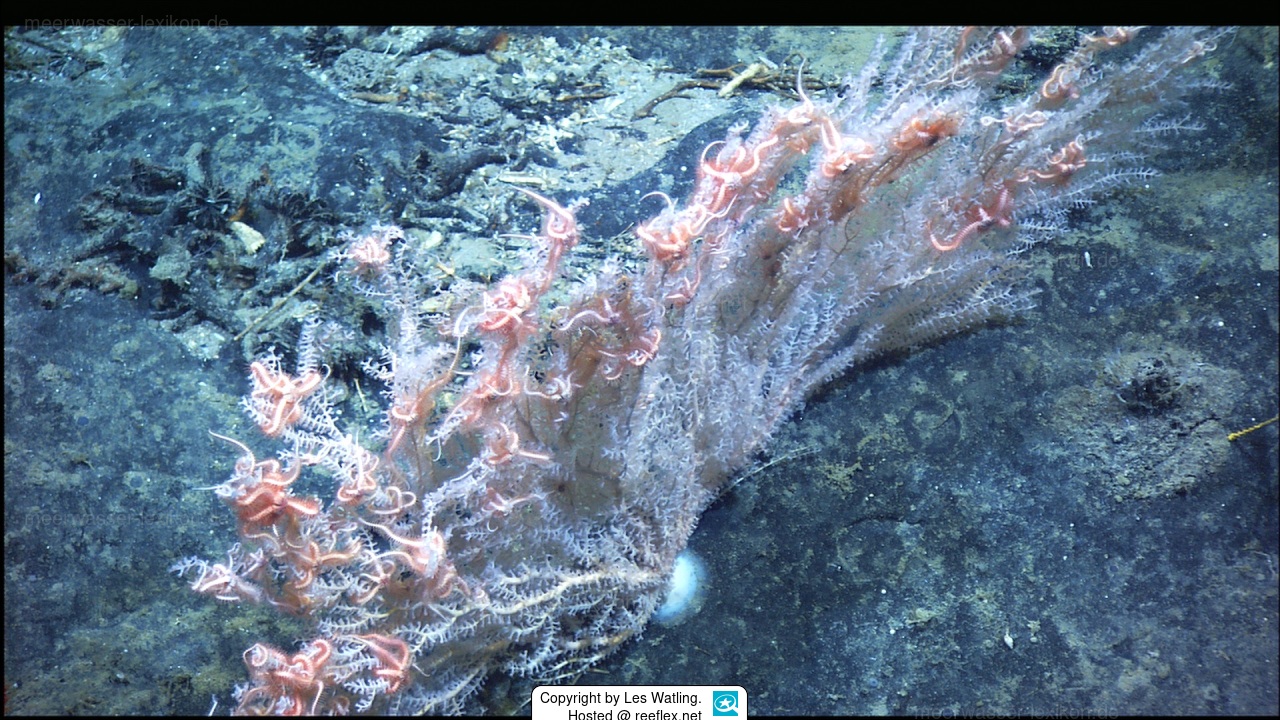Info
In the depths of our oceans, where no human being can reach without specially built and equipped underwater vehicles (ROV, AUV, UUV), there live animals that are in no way inferior in beauty and grace to their tropical cousins, but in constant darkness.
The deep-sea gorgonian Candidella imbricata lives at great depths in very cold water and has been found on Kelvin Seamount, an extinct underwater volcano belonging to the New England Seamounts in the North Atlantic, and on Corner Rise Seamounts, in the North Atlantic east of the New England Seamounts.
Further finds of this gorgonian are from the San Pablo,- Muir,- and Manning Seamounts, which also belong to the New England Seamounts group.
It is interesting that this gorgonian is often colonized by soft corals, e.g. by Primnoidae, here the epibiotic soft coral Gorgoniapolynoe caeciliae (Fauvel, 1913), and quantities of the polychaetes worm (Gorgoniapolynoe caeciliae).
The exact reasons for this colonization are not yet fully understood (nutritional benefits, protection against predators...).
The gorgonia has no internal zooxanthellae and therefore has to cover its life energy by catching suitable zooplankton and sea snow.
Due to its deep distribution, the coral will not be traded, and it would require a great deal of technical effort to provide it with the necessary living conditions.
It is known that such sense or nonsense can be argued about, but why maintain something that always needs darkness and cannot and should not be observed?
Ultimately, such a coral would probably not be financially viable, as the procurement costs would be immense.
We thank Prof. Dr. Les Watling from Hawaiii for the permission to use his photos.
The deep-sea gorgonian Candidella imbricata lives at great depths in very cold water and has been found on Kelvin Seamount, an extinct underwater volcano belonging to the New England Seamounts in the North Atlantic, and on Corner Rise Seamounts, in the North Atlantic east of the New England Seamounts.
Further finds of this gorgonian are from the San Pablo,- Muir,- and Manning Seamounts, which also belong to the New England Seamounts group.
It is interesting that this gorgonian is often colonized by soft corals, e.g. by Primnoidae, here the epibiotic soft coral Gorgoniapolynoe caeciliae (Fauvel, 1913), and quantities of the polychaetes worm (Gorgoniapolynoe caeciliae).
The exact reasons for this colonization are not yet fully understood (nutritional benefits, protection against predators...).
The gorgonia has no internal zooxanthellae and therefore has to cover its life energy by catching suitable zooplankton and sea snow.
Due to its deep distribution, the coral will not be traded, and it would require a great deal of technical effort to provide it with the necessary living conditions.
It is known that such sense or nonsense can be argued about, but why maintain something that always needs darkness and cannot and should not be observed?
Ultimately, such a coral would probably not be financially viable, as the procurement costs would be immense.
We thank Prof. Dr. Les Watling from Hawaiii for the permission to use his photos.







 Prof. Dr. Les Watling, Hawaii
Prof. Dr. Les Watling, Hawaii



